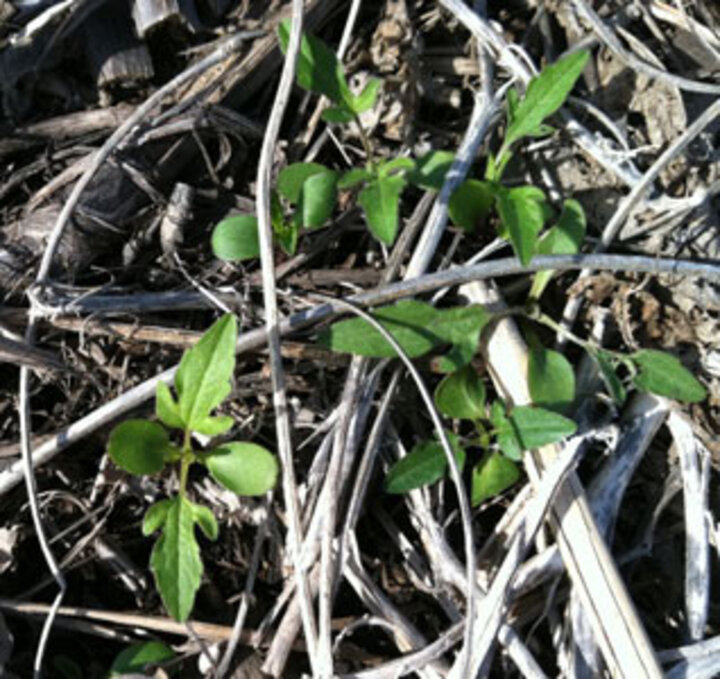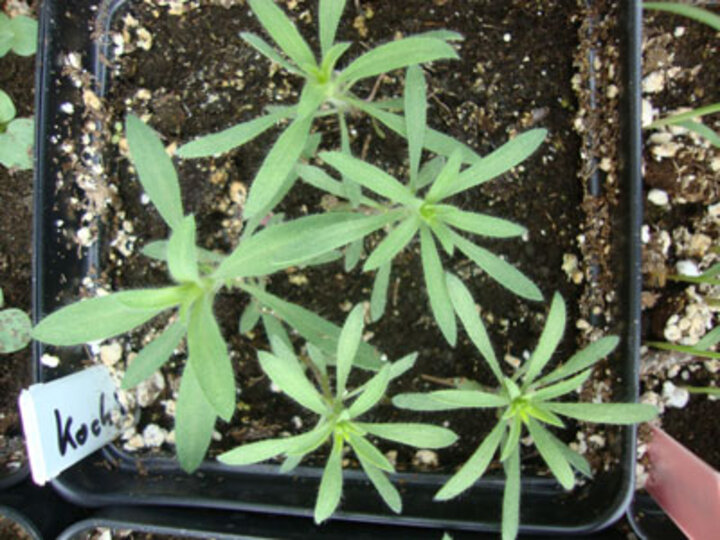
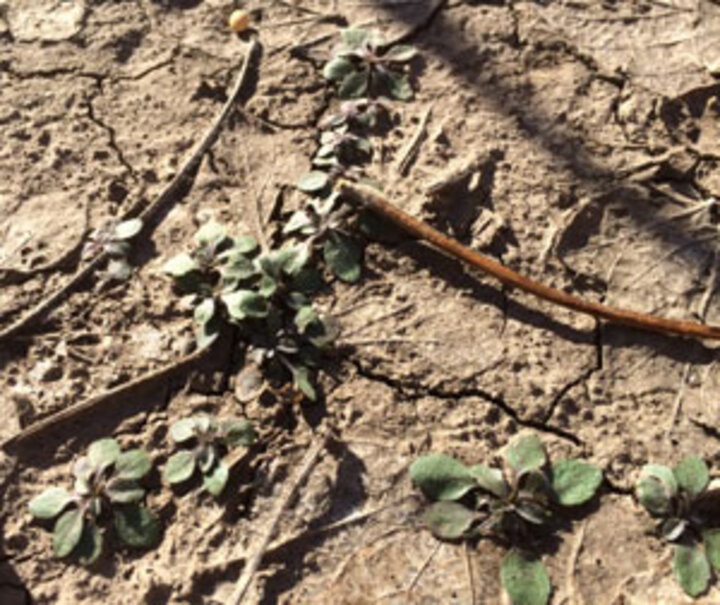
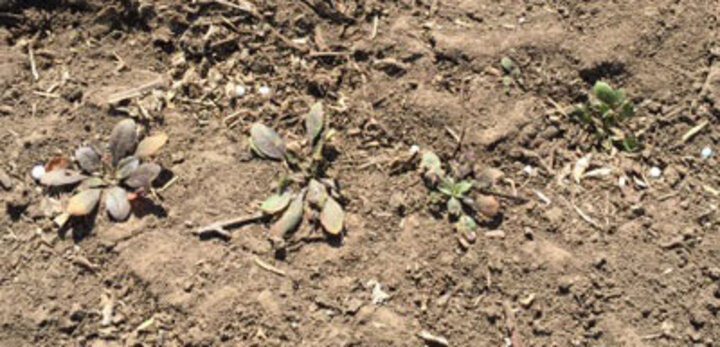
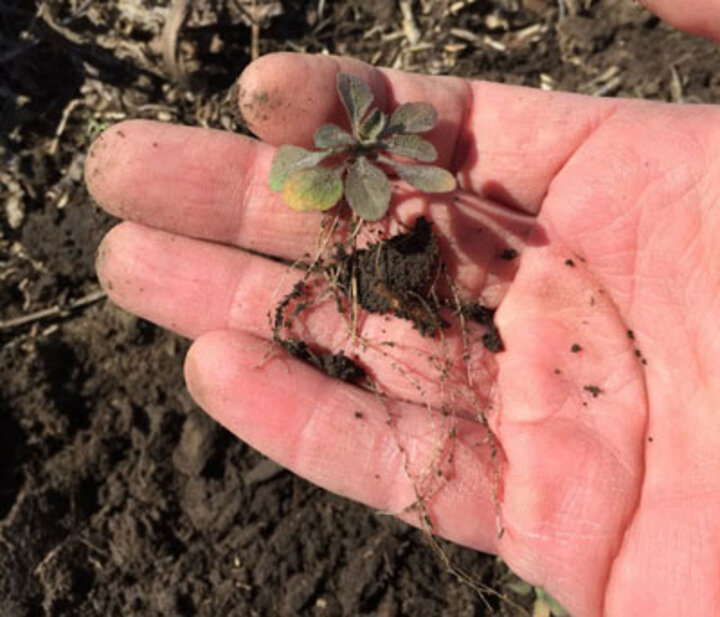
Producer desires to put their planter in the ground are not the only thing growing out there right now. Winter annual weeds are taking advantage of the recent warm temperatures and solar radiation to resume growth and development, making this an ideal time to scout for henbit, field pennycress, tansymustard, shepherd's-purse and marestail. The main species to scout for is marestail, also known as horseweed.
Many marestail populations in Nebraska have evolved resistance to glyphosate and ALS-inhibitors. If not managed soon, post-emergence control can be very challenging, especially in soybean fields.
Marestail is a surface-germinating winter annual weed that thrives in no-till fields. In the fall, marestail produces non-dormant seeds that germinate and form an overwintering rosette. Seeds can also persist over winter and germinate the next spring. Studies have indicated that fall emerging marestail seedlings tend to experience higher mortality while established plants produce more seeds and are more competitive to crops when compared to spring emerged plants.
Marestail plants can produce up to 200,000 seeds, which are mainly wind dispersed. Even if you have not had marestail in the past, if your neighbor has, it would be worth taking some time to walk your fields prior to planting to avoid surprises.
Marestail starts off as a small rosette and require special care to see if covered by crop residue. Small rosettes were noticed in between mature soybean rows at the UNL research farm in Lincoln last fall, and earlier this month the same marestail plants were still there "hiding" under the soybean residue, ready to resume growth this spring. Since marestail can germinate in the fall and in the spring, scouting is also recommended for fields that were sprayed in the fall.
Marestail is most susceptible to herbicides when still in the rosette stage, before bolting. Thus, for proper marestail management, burndown along with residual herbicides should be used to control established plants and to suppress the ones that are yet to emerge. For herbicide options to control marestail and other winter annual weeds, check the UNL Guide for Weed Management in Nebraska. Keep in mind that using effective herbicides from different modes of action will help you in the battle against herbicide resistant weeds. (Practice rotation, rotation, and rotation!)
Weed Identification
For information on identifying winter annual weeds see:
- Practical Weed Science for the Field Scout - Corn and Soybean, University of Missouri
- Identification of Winter Annual Weeds, Nebraska Extension.
Ragweed and Kochia
Another species to keep an eye on early in the spring will be giant ragweed and kochia, which are summer annual weeds that tend to emerge early in the season and for a short period of time. Populations of these two species also have evolved resistance to glyphosate in Nebraska.
Rodrigo WerleWeed Science Graduate Student
